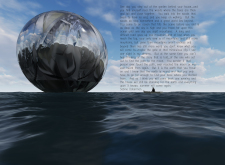5 key facts about this project
The design focuses on exploration and the connection between built structures and their natural surroundings. It evolves from a small garden to flowing woods, open oceans, and towering mountains. This journey is intended to create an engaging experience that highlights how people interact with different environments, emphasizing a narrative woven throughout the spaces.
Design Concept
The architectural layout transforms the idea of exploration into a real experience. Users are guided through a series of spaces that, while unique, feel like parts of a whole. Visual focus points are carefully placed along the path, which encourages movement and curiosity. This narrative is enriched by changes in scale, creating both wide views and more intimate areas that invite quiet reflection.
Natural Integration
The design reflects an appreciation for the various landscapes included in the concept. Each environment—ranging from thick forests to broad oceans and high mountains—informs the design elements meant to evoke their characteristics. The approach pays careful attention to how the structure fits among these natural features, creating a sense of harmony. Proportions respond to the landscape, allowing visitors to feel connected to their surroundings.
Material Considerations
While specific materials are not discussed in detail, the themes of earth and natural cycles suggest that material choices aim to reflect the different environments. The design likely considers how surfaces feel and look, capturing the essence of the landscapes it draws from. These choices will help create a tactile experience that enhances the connection between the spaces and the outside world.
Paths encourage ongoing exploration, leading visitors toward hidden corners and open sights. Architectural details relate to the natural surroundings, helping the design blend into its environment. This focus on unity between the built form and landscape enriches the overall experience.



















































